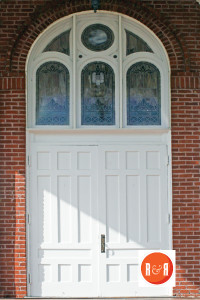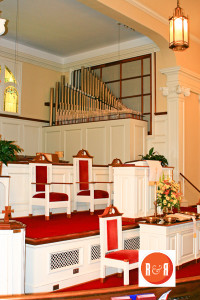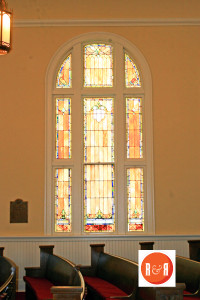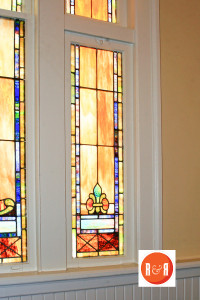“A very early Presbyterian congregation in the S.C. Lowcountry.”
411 North Academy Street
City Directories and History: A very early Presbyterian church, ca. 1736. The current sanctuary was designed by Henry F. Walker and Henry S. Burden and cost $15,000 in 1913 to construct.
In 1731, townships were laid out in the interior of South Carolina to provide protection and trade for the lower state. During the year 1732, Roger Gordon led a group of Scotch-Irish to Williamsburg Township, named in honor of William of Orange, where Gordon received a land grant the same year. Two years after this first settlement, John Witherspoon, a great-grandson of the Reformer, John Knox, came with his remaining family, some having come in the 1732 migration. Most of these families settled near King’s Tree, a settlement probably deriving its name from a large White Pine that grew on the banks of Black River and was reserved for the king’s use, where the Williamsburg Presbyterian Congregation was formally organized in August of 1736 by the Reverend Robert Heron. So far no proof has revealed itself to substantiate the above tradition. The Witherspoons, Jameses, Wilsons, Flemings, and relations, took an active part in the building of this church.
The first meeting house had probably been con-structed of logs and was used until around 1746, when a new and larger structure was erected across from the original site and in the area of the present Williamsburg Cemetery. The church continued to prosper although the “Great Mortality,” an epidemic of 1749- 50, took almost eighty inhabitants of the township, including three of the original Elders. Williamsburg Presbyterian Church may rightfully be regarded as the mother church of a great number of churches, including Salem Black River, Aimwell, Hopewell, and the oldest Indiantown.
By the latter 1750’s there were numerous residents located near the old Indian town who were too far from the King’s Tree and the Black Mingo Church to undertake the hardships of habitual travel. Indian- town Presbyterian Church was founded in 1757 by the sons of the original Williamsburg settlers and more recent settlers from Ireland or the northern colonies. During the year 1757, a Meeting House was constructed about a mile and a half west of the site of the old Indian town located in the fork of Black Mingo Creek and Indiantown Swamp. (Black Mingo Creek bears the name of the tribe that inhabited the area, and the name “Mingo” itself has been thought to mean “black” or “chief.”)
In 1799, there was also a Presbyterian Meeting House existing on Lynch’s Lake, a tributary of Lynch’s Creek. No information has been found concerning the Lynch’s Lake Church except that it 10 not last long into the 1800’s after Mr. Knox’s pastorate was over. It was located on the stream whose name it bore near the present town of Johnsonville. Thus, Williamsburg and Indiantown, the oldest surviving Presbyterian churches became large and flourishing congregations and enjoyed prosperity and influence.
There were strong Episcopal feelings along the Santee. “From the beginning of the Revolutionary War the Episcopal Protestant Faith, under the guidance of the Church of England, was the only denomination prevailing along the Santee.”20 It has already been noted that two Chapels of Ease were established in the Santee country in the 1730’s, but by 1825 the one close to Murray’s Ferry must have been extinct as it is not shown on Mills’ map. The other chapel above Lenud’s Ferry is denoted on the same map as Old Episcopal Church and is shown just on the Georgetown side of the county-line road.
(Information from: Names in South Carolina by C.H. Neuffer, Published by the S.C. Dept. of English, USC)
Also see PDF history this page: GUIDE TO PRESBYTERIAN NAMES AND PLACES IN SC by J.B. Martin, III – 1989
Stay Connected
Explore history, houses, and stories across S.C. Your membership provides you with updates on regional topics, information on historic research, preservation, and monthly feature articles. But remember R&R wants to hear from you and assist in preserving your own family genealogy and memorabilia.
Visit the Southern Queries – Forum to receive assistance in answering questions, discuss genealogy, and enjoy exploring preservation topics with other members. Also listed are several history and genealogical researchers for hire.
User comments welcome — post at the bottom of this page.
Please enjoy this structure and all those listed in Roots and Recall. But remember each is private property. So view them from a distance or from a public area such as the sidewalk or public road.
Do you have information to share and preserve? Family, school, church, or other older photos and stories are welcome. Send them digitally through the “Share Your Story” link, so they too might be posted on Roots and Recall.
Thanks!
IMAGE GALLERY via photographer Bill Segas – 2006










